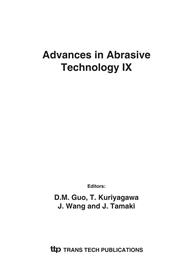p.323
p.329
p.335
p.341
p.347
p.353
p.361
p.367
p.373
Design of Robust Grinding Wheel Reciprocating Arrangement for Precision Point-Grinding Machining
Abstract:
This research is to investigate the dynamic characteristics of the grinding process. A kind of robust grinding wheel reciprocating arrangement is schemed out, which realizes the precise point-grinding machining. The grinding wheel reciprocating movement is driven by a linear motor to replace the traditional crank or hydraulic pressure drive device. Based on the time series method, the modal experimental analysis technique has been adopted in this paper. By acquiring acceleration signals of multiple positions of the grinding wheel slide, the dynamic characteristics are analyzed and the modal parameters of the structure are identified by virtual analysis program. The boundary condition of the finite element model is adjusted for optimizing its dynamic characteristic. The equivalent substructure is created and modified in order to improve the surface grinding quality. This study has got satisfying results. The grinding wheel movement realizes the self-regulation control and reduces the surface waviness and roughness during high speed point-grinding operation.
Info:
Periodical:
Pages:
347-352
Citation:
Online since:
January 2007
Authors:
Price:
Сopyright:
© 2007 Trans Tech Publications Ltd. All Rights Reserved
Share:
Citation:


